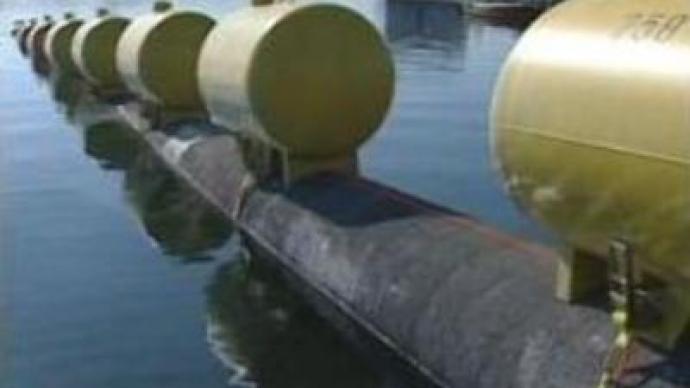First gas pipeline to directly link Russia and Europe in 2010

The environmental effects of building the North European gas pipeline at the bottom of the Baltic Sea have become the topic of discussions in the first round of talks between Russian and European officials in Stockholm.
This will be the first gas pipeline that connects the two partners directly.Russia and Germany struck a deal to build the North European gas pipeline, also called Nord Stream, in September 2005. It will go through the bottom of the Baltic Sea, connecting the northern Russian city of Vyborg to the German city of Greifswald, stretching over 1,200 KM. The project is run by the Nord Stream Company, a joint venture by Russia’s Gazprom and Germany’s BASF and Ruhrgas. “In Europe the domestic production of gas is falling and the demand is growing significantly. Therefore, Nord Stream is meant to cover this growing demand for additional gas and to create an additional supply route to Europe,” said Irina Vasilyeva, Nord Stream Communications Manager.Environmentalists have been voicing concern over the possible impact on the Baltic Sea. There's been criticism over how the project was prepared.“The Environmental Ministries of Baltic States didn't agree that the project technical documents were separated by separate parts for each country. Project documents should be under environmental scrutiny as a whole project. In this case it will be possible in reality to discuss alternative roads,” said Evgeny Shvarts, Head of Conservation Policy, WWF. Four-centimetre thick pipes will be covered with 15-centimeters of a concrete coating for additional safety. The managing company says ensuring high environmental standards is a top priority.“We need to convince the authorities of the involved countries that the project will consider all the possible impacts it may cause on environment and that all impacts will be minimised,” said Irina Vasilyeva.Another worry is chemical weapons buried at the bottom of the Baltic Sea since 1947. Nord Stream says it has taken this into account when planning the route.An expert on chemical weapons Lev Fedorov agrees there is no threat.“The pipeline route goes a hundred kilometres from the area near Lithuania and 50 kilometres from the Bornholm Basin near Denmark where chemical weapons were dumped. It goes right in the middle. So the construction will not affect the weapons in any way,” he noted.The first leg of the pipeline will go on line in 2010, the second – three years later.It will supply 55 BLN CU M of gas every year – that is enough to provide for 20 MLN households.Europe receives a quater of its gas from Russia. For the EU, the Nord Stream is a key project which will not only boost its gas imports but also strengthen its energy security.
You can share this story on social media:












